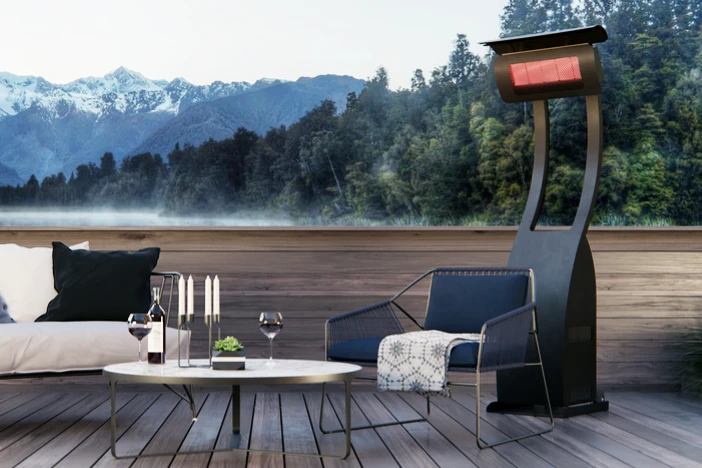
1. Why bother with a patio heater?
When the weather cools you don’t need to call it quits on porch season. Patio heaters help you keep the good times rolling, boost your vitamin D and serve up toasty comfy evenings—even when temps say otherwise. Unlike home furnaces that use convection heat to just warm the air, radiant patio heaters (especially the infrared kind) are pros at keeping people, tables and even the dog warm [Hitchings (2007)]. Some gas versions generate a little of both types of heat.
2. Wood or gas fire pits or a heater?
Note: We’re talking about both wood-burning and gas fire pits here, since both are popular alternatives to patio heaters. Each type has its own strengths (and a few smoky drawbacks).
- Ignition – Wood fire pits need matches and patience. Gas fire pits and patio heaters usually start with a push of a button.
- Control – Fires (wood or gas) offer less precision for regulating heat output. Patio heaters have dials and remotes for quick precise control.
- Coverage – All fire pits are cozy up close. Most patio heaters can warm a whole circle of friends with more even coverage.
- Air Quality – Wood fires spew smoke which isn’t great for allergies or your white shirt. Gas fire pits and patio heaters are smoke-free (unless you burn your sausage).
- Safety – Wood fire pits toss sparks (not ideal for kids or pets) and gas fire pits have a steady open flame. Patio heaters do get hot but there’s no exposed fire which means less worry about wind gusts or marshmallows gone rogue.
- Aesthetics – The flicker of a real flame is tough to beat—gas fire pits keep the ambiance minus the smoke. Patio heaters are all function but win big in the “no ashes in your lap” department.
- Convenience – Patio heaters and gas fire pits are quick to light and easy to clean. Wood fire pits… not so much.
- Placement flexibility – Patio heaters are allowed in more places since gas fire pits (like wood ones) may face stricter fire or insurance rules especially on balconies or in wildfire-prone zones.
- Maintenance – Heaters just need a cover and a quick wipe. Wood fire pits need regular ash removal and cleaning; gas fire pits need occasional checkups for gas lines and burners.

3. How much heat do you need?
Measure your space (in square feet) multiply by 20 and that’s your BTU target. Prefer watts? Divide BTUs by 3.41.
Here’s a handy table to make it even easier:
| Space Size | BTUs Needed | Watts Needed |
|---|---|---|
| 100-150 ft² | 2,000-3,000 | 600-900 |
| 250-500 ft² | 5,000-10,000 | 1,500-3,000 |
| 1,000 ft² | 20,000 | 6,000 |
| 1,500 ft² | 30,000 | 8,800 |
| 2,000 ft² | 40,000 | 11,800 |
Example – If your deck is 500 ft² aim for 10,000 BTUs or about 3,000 watts of heat.
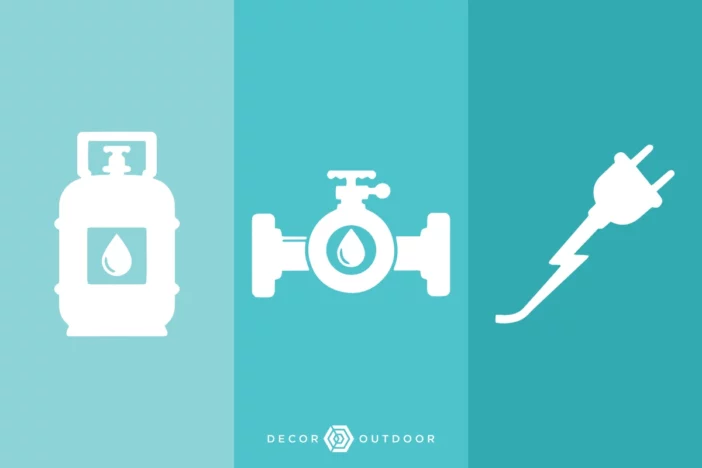
4. Which fuel is best for outdoor heaters?
Propane
- Pros – Cheap up front, easy setup, quick heat, portable
- Cons – Tanks run out, need safe storage, outdoor use only
Natural Gas
- Pros – Lowest long-term cost, never runs out, ideal if you already have a gas line, a bit friendlier to the planet than propane
- Cons – Higher installation cost (pipes!) stays put, outdoor only, must be professionally installed
Electric
- Pros – Plug-n-play, works indoors or outdoors, 90–98% efficiency, no emissions, safest and lowest-maintenance, instant heat with infrared
- Cons – Long-term electric bills may add up, needs an outlet nearby, often weaker heat output, sometimes warms up a little slower
5. Real cost of staying toasty – Energy efficiency & operating cost comparison
Let’s put the numbers where the heat is. Here’s what you might pay per hour on average for each fuel type plus how efficient they really are:
| Heater Type | % of Energy to Heat | Cost per Hour* | Notes |
|---|---|---|---|
| Propane | 40–50% | $1.70–$3.50 | Tanks run out, portable |
| Natural Gas | 40–50% | $0.30–$0.80 | Fixed install, lowest over time |
| Electric | 90–98% | $0.10–$0.60 | Best for small spaces, efficient |
*Estimates based on US 2024 rates; check your local numbers for the real hit to your wallet.
If you’re heating all winter keep an eye on running costs—especially for larger spaces.
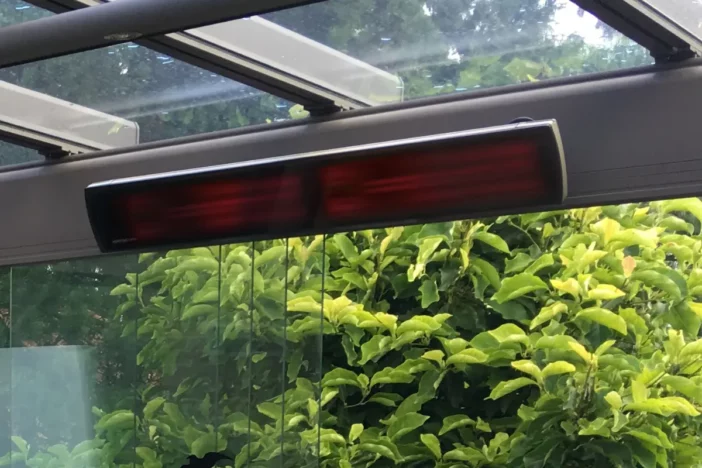
6. Heating green – Environmental impact & emissions
Let’s be honest—some heaters play nicer with the planet than others. Electric models are usually the winners here especially if your local grid uses solar or wind. Propane and natural gas heaters release carbon dioxide and in propane’s case some other pollutants. Fire pits? They’re cozy but rate highest for smoke and particulates no matter how romantic the crackle.
- Electric heaters – No emissions at the point of use. Combined with renewable energy they’re the cleanest option.
- Propane – Higher greenhouse gas emissions, less efficient, and the tanks must be refilled, trucked and stored.
- Natural gas – Cleaner than propane or wood but still a fossil fuel.
- Gas fire pits – Smoke-free but still fossil-fueled with open flame and heat loss into the sky.
- Wood-burning fire pits – Most emissions, most smoke, least eco-friendly (EPA’s Burn Wise Program has the lowdown).
If reducing your carbon footprint is high on your list, go electric and check with your utility about clean energy programs.

7. Choose your style (no one-size-fits-all)
Freestanding/Tower (Mushroom, Pyramid)
- Rolls where you need the heat, covers 8–12 ft all around, great for decks and patios.
Tabletop
- Heats a smaller 3–5 ft bubble, perfect for coffee tables or intimate dinners.
Wall or Ceiling Mounted
- Best for saving valuable floor space and more efficient than heating fans [Roth, Dieckmann & Brodrick (2007)]. Most are electric, installed high up so you won’t smack your head
- Gas versions require pro installation and permanent placement.
Hanging or Pole-Mounted
- Good for commercial spaces or crowded patios. Keeps warmth up high out of reach of foot traffic and flying elbows.
| Heater Type | Coverage | Best For |
|---|---|---|
| Freestanding/Tower | 360°, 8–12 ft | Open patios, decks |
| Tabletop | 3–5 ft radius | Small tables, nooks |
| Wall-Mounted | 8–10 ft radius | Limited floor space, focused warmth |
| Ceiling-Mounted | 6–10 ft below | Covered porches, gazebos |
| Pole-Mounted | 10–16 ft radius | Large bustling commercial areas |
| Hanging | Direct below | High/angled ceilings, bar spaces |
8. Heating made easy – Accessibility & controls
Not all heaters make you struggle with tiny knobs in the dark. Look for these handy upgrades:
- Remote controls – To adjust temp from your chair.
- WiFi/smart controls – Heat your patio with an app.
- Big easy-to-grip dials – No need for superpowers to operate.
- Timers – Set it, forget it and never overcook the air.
- Quiet operation – Essential for peaceful nights and some models are nearly silent.
- Height-adjustable or oscillating designs – Let you aim the heat where it’s needed most.
If you or a guest has limited mobility a well-placed switch or remote makes hosting way easier.

9. Safety & local rules (AKA – don’t torch the deck)
- Fire codes and local rules – Check before you buy especially for balconies or high-rise buildings. Gas and wood fire pits may be restricted and in some cities gas heaters are a no-go on decks or rooftops.
- Gas heaters/fire pits – Only use in well-ventilated outdoor spots never inside [Whitmyre & Pandian (2018)].
- Placement – Give at least 3 feet of clearance from anything flammable and avoid high traffic areas to prevent tip-overs.
- Certifications – Look for safety certifications like UL or CSA. Bonus points for heaters with automatic shutoff and tip-over protection.
- Kids & Pets – Keep heaters and fire pits far from curious hands and paws.
- Level ground – Always place portable heaters and fire pits on flat surfaces to avoid accidental tipping.
- Electric-only restrictions – Many apartment buildings and HOAs only allow electric heaters. Double-check before plugging in!
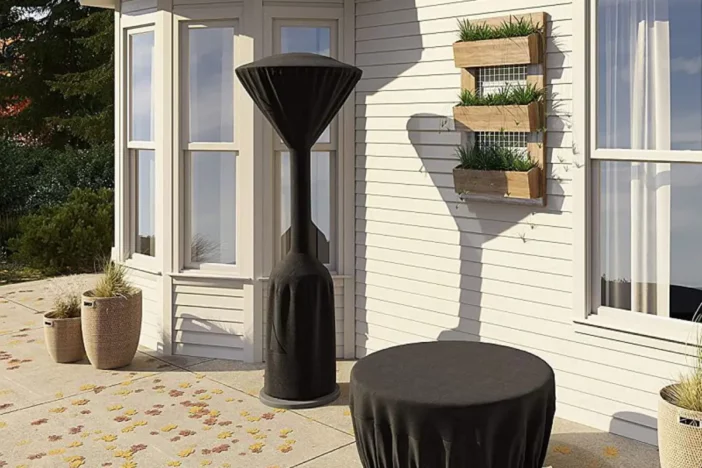
10. Don’t skip maintenance & accessories
- Covers – Invest in a weatherproof cover for off-season.
- Regular cleaning – Wipe down, clear away cobwebs, follow the manual.
- Secure placement – In wind-prone areas weigh down or tether portable models.
- Handy accessories – Remotes, timer switches and angled mounts all make your life easier.
- Smart storage – Store smaller portable heaters and fire pits indoors in bad weather and keep all fuel connections tight and clean.
- Corrosion resistance – Stainless and marine-grade steel help prevent rust and last longer especially near the coast or in humid places.
- Gas safety checks – Always check hoses and valves on gas models at the start of each season.
11. Outdoor heater brands worth a look
Some top brands in patio heating include: Bromic, Infratech, Schwank, Sunpak, RADtec, Heatscope and Calcana. These guys are popular because they work well, last long and look sharp doing it.
12. Quick tips & FAQs
- How many heaters do I need? – Big space? Go for more than one and overlap their ranges.
- Best for wind – Electric radiant heaters—wind doesn’t blow your warmth away.
- Can I use propane or gas fire pits on my balcony? – Only if your building and city say it’s ok—many don’t.
- Can you use patio heaters under a roof or covered area? – Yes, but safety replies on the type of heater, installation and ventilation.
- Cost-saving tip – Electric may cost less over the long term and save on fuel runs.
- Climate zones – Colder or windy locations often need more heaters, bigger models or a combination with fire pits for full comfort.
- Material matters – Stainless steel and marine-grade options last longest, especially if your climate is rainy, snowy or near the sea.

13. Bottom line – Find your perfect heater and get back outside
Choosing the right patio heater isn’t complicated—just figure out your space, your weather, your wallet and your style. Whether you want plug-in, mobile gas or wall-mount there’s a heater (or fire pit) that’ll keep your evenings glowing—even if you’re out of hot cocoa.
Want the numbers behind the warmth or more on safety and accessories?
Check out these resources:
- U.S. Department of Energy: Outdoor and Space Heating
- EPA: Burn Wise (fire pits & air quality)
- NFPA: Outdoor Heating Safety Tips (PDF)
- Consumer Reports: Outdoor Patio Heater Options

References
- Hitchings, R. (2007). Geographies of embodied outdoor experience and the arrival of the patio heater. Area, 39(3), 340-348.
- Roth, K., Dieckmann, J., & Brodrick, J. (2007). Infrared radiant heaters. Ashrae Journal, 49(6), 72.
- Whitmyre, G. K., & Pandian, M. D. (2018). Probabilistic assessment of the potential indoor air impacts of vent-free gas heating appliances in energy-efficient homes in the United States. Journal of the Air & Waste Management Association, 68(6), 616-625.


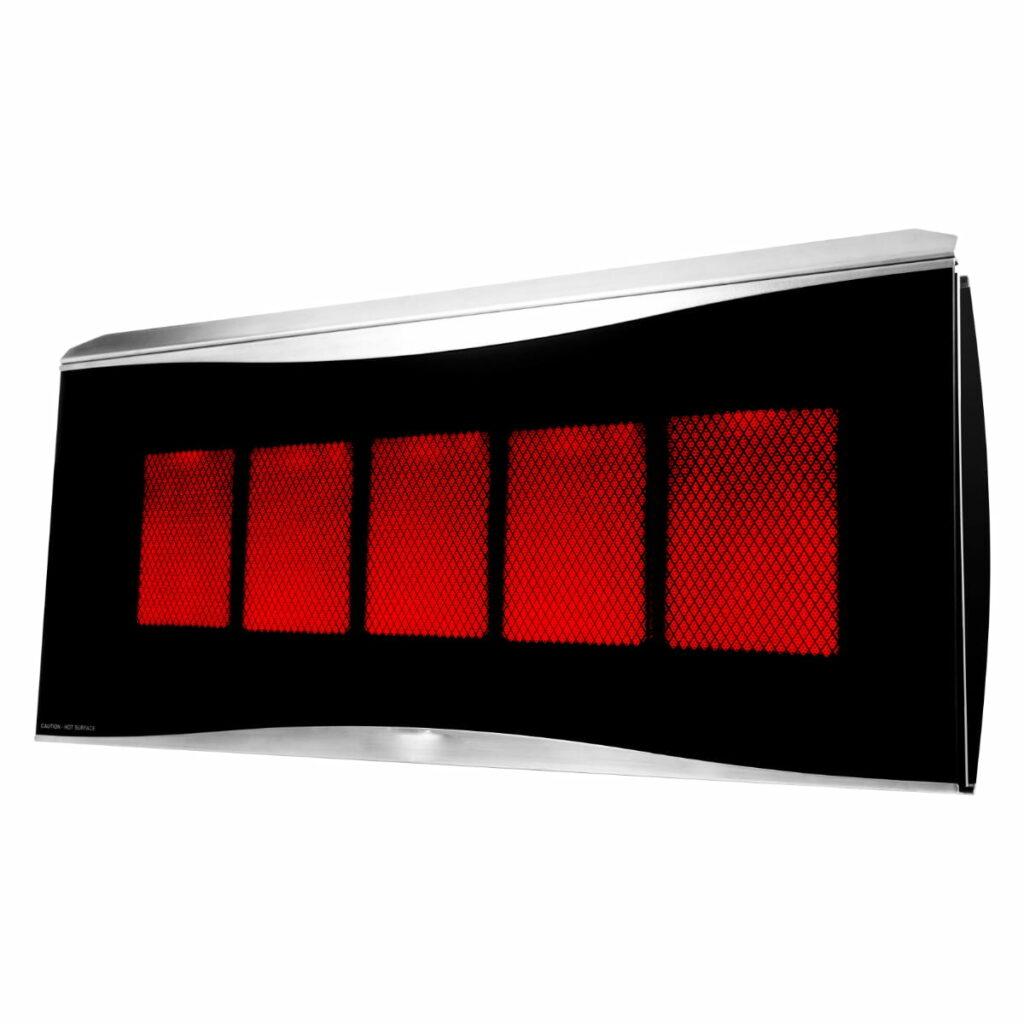
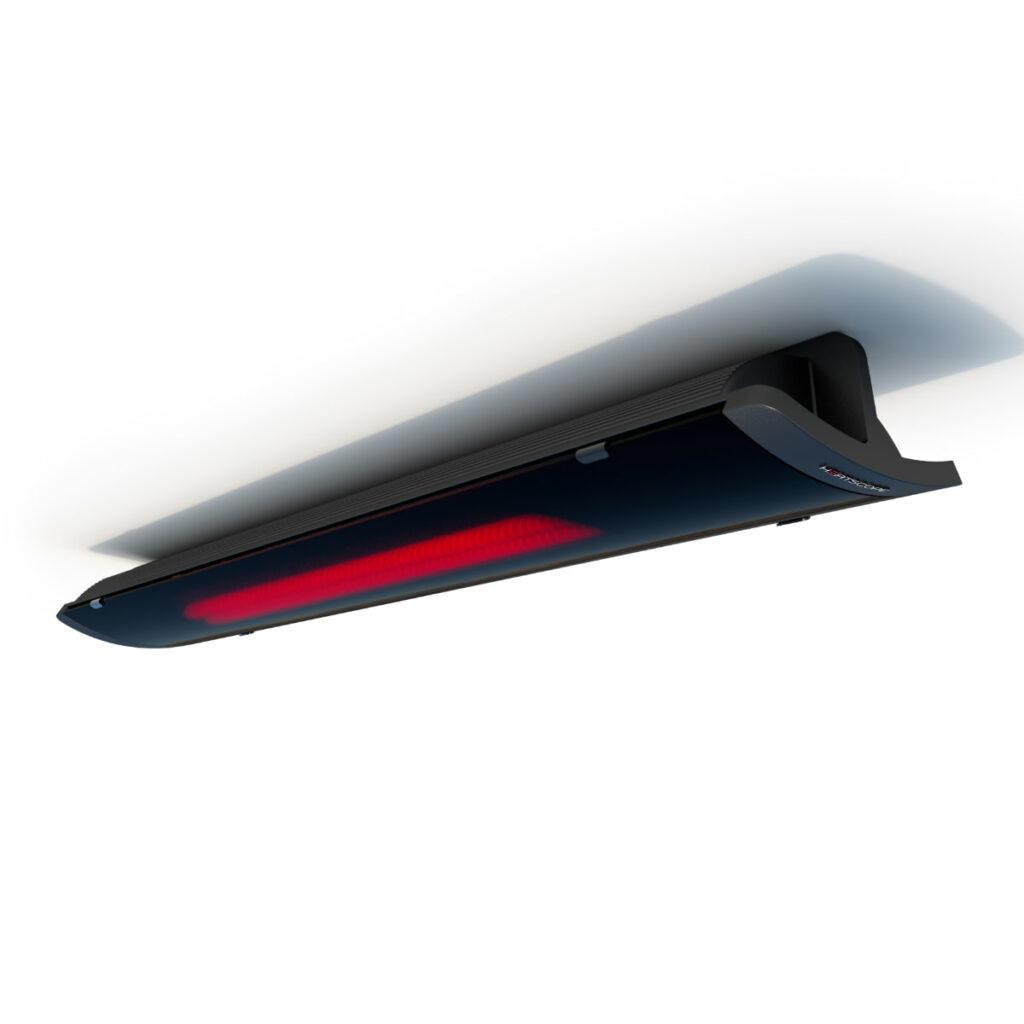
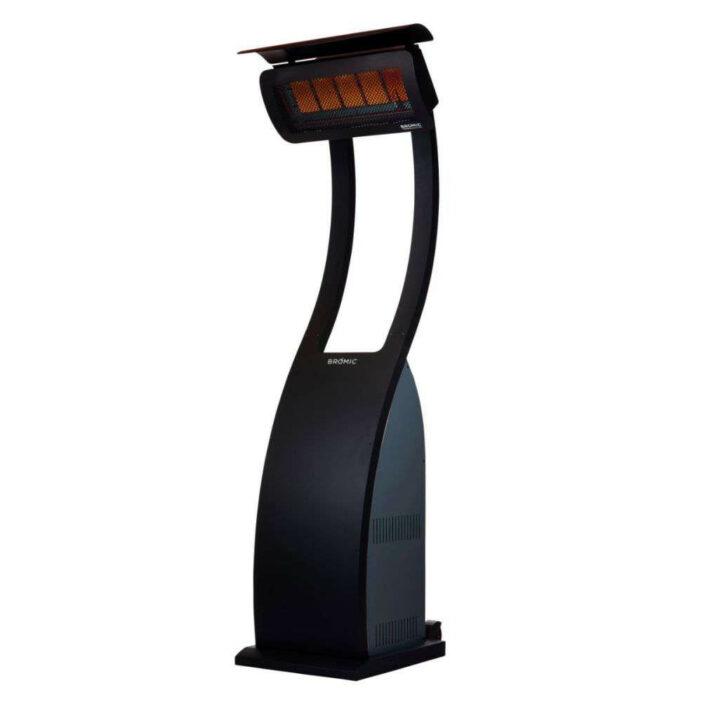
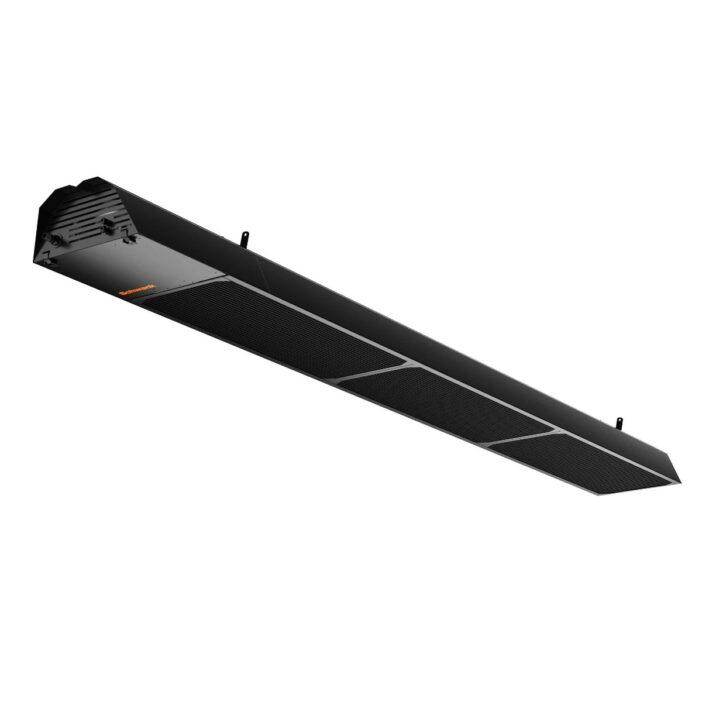
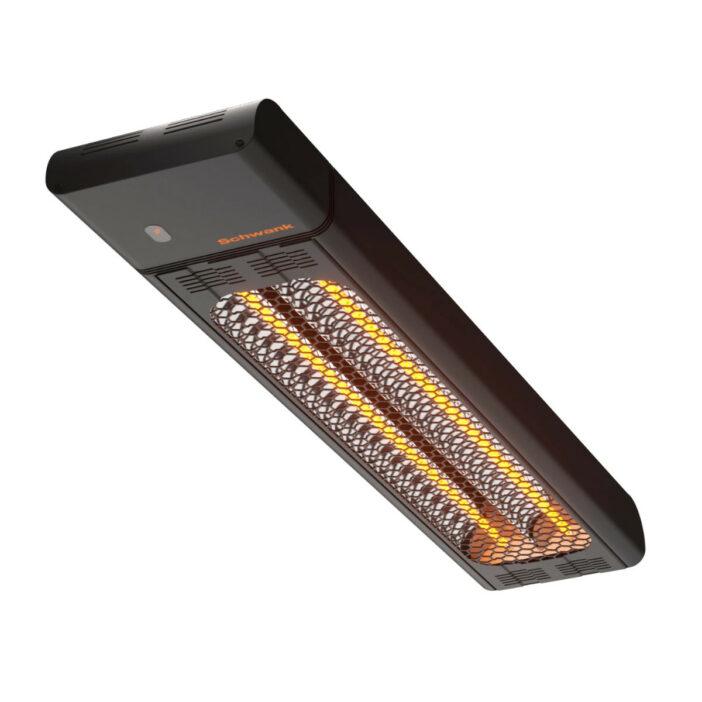
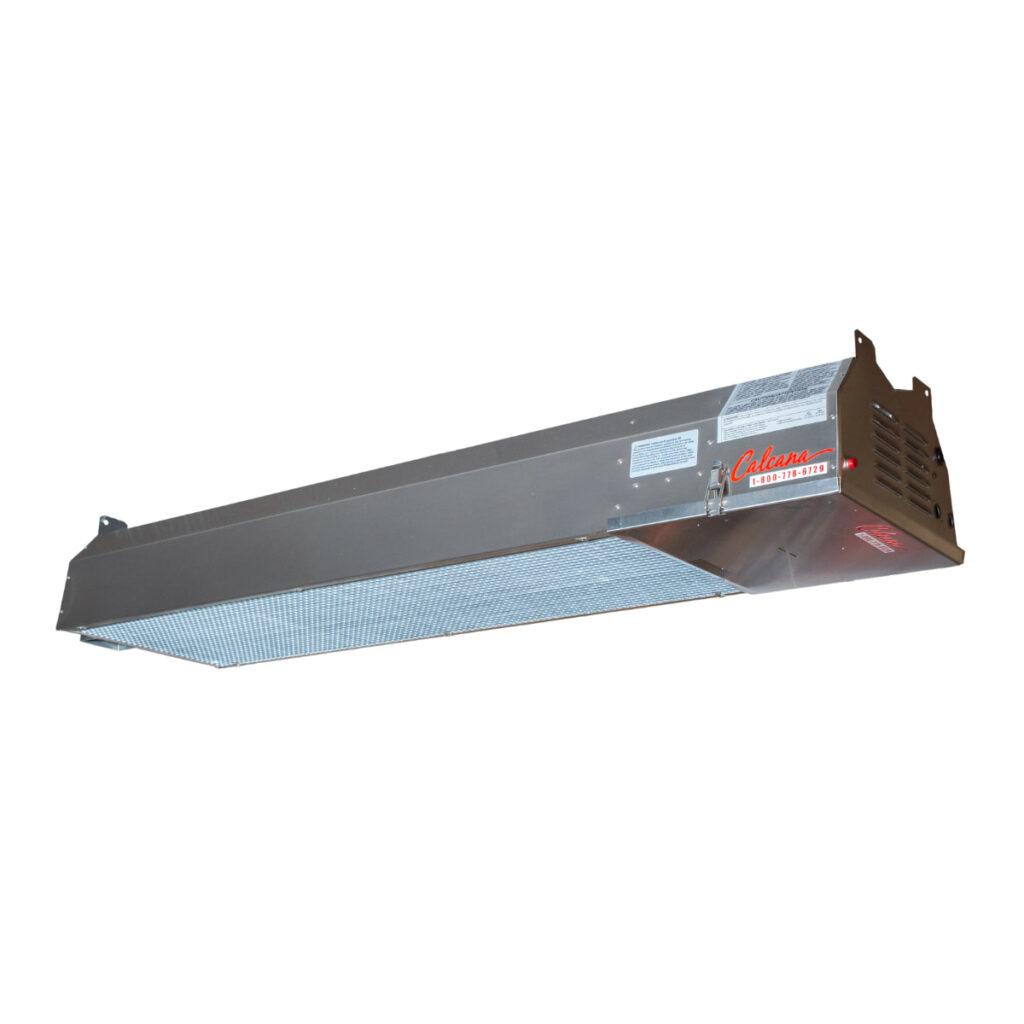




Leave a Reply